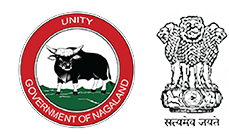As the positive cases of COVID-19 increase in the country, the Government has chalked out and implemented the "Cluster Containment Strategy" in States where the threat of community transmission has increased. In many cases where a patient had tested positive, the source of virus is yet to be traced which has alarmed the authorities about possible community transmission.It would contain the virus in a defined geographic area (containment zone), help detect the cases at an early stage, break the chain of transmission and prevent its spread to other areas.
The Cluster Containment Strategy would focus on strict implementation of the complete lockdown of a particular area, social distancing measures, enhanced active surveillance of people residing in that area, testing of all suspected cases, isolation of cases, quarantine of contacts and intensive risk communication to create awareness among public on preventive health measures.
The successful implementation of the Cluster Containment Strategy is dependent on five core elements which are 1.Active Surveillance 2.Passive Surveillance 3. Contact Listing and Tracing 4. Mass Disinfection 5. Perimeter Control.
Active surveillance:
The village/ward will be divided into sectors of 50 households for coverage by the ASHAs/Anganwadi workers/ANMs/trained volunteers. A sector would consist of 30 households in difficult areas. Additional workforce would be mobilised from neighbouring districts (except buffer zone) to cover all the households in the containment zone if required. The field workers will be performing active house to house surveillance daily in the containment zone. They will line list the family members and those having symptoms.
Passive Surveillance:
All health facilities in the containment zone will be listed as a part of mapping exercise. All such facilities both in Government and Private Sector (including clinics) shall report clinically suspect cases of COVID-19 on real time basis (including 'NIL' reports) to the District Control Room. There will be a review of Influenza-like illness (ILI)/ Severe Acute Respiratory Infection (SARI) cases reported in the last 14 days by the District Health Officials to identify any missed case of COVID-19 in the community. There will be enhanced passive Surveillance in the buffer zone.
Contact Listing and Tracing:
All possible contacts of the person confirmed to be COVID-19 positive will be line-listed and tracked and kept under surveillance at home for 28 days by designated field workers. The Supervisory Officer in whose jurisdiction, the laboratory confirmed case/ suspect case falls shall inform the District Control Room about all the contacts and their residential addresses. Those contacts exhibiting symptoms will be shifted to the hospitals through specific ambulance. They will be placed in a designated isolation ward while they are tested for COVID-19. The ambulances are fumigated and disinfected after each trip.
Mass Disinfection:
All public places in the containment zone will be disinfected regularly until such time the lockdown restrictions are lifted.
Perimeter Control:
The perimeter control will ensure that there is no unchecked outward movement of population from the containment zone except for maintaining essential services (including medical emergencies) and Government Business Continuity. It will also limit unchecked influx of population into the containment zone. All vehicular movement, movement of public transport and personnel movement will be restricted. All roads including rural roads connecting the containment zone will be sealed off and guarded 24x7.
(DPRO Mon)

